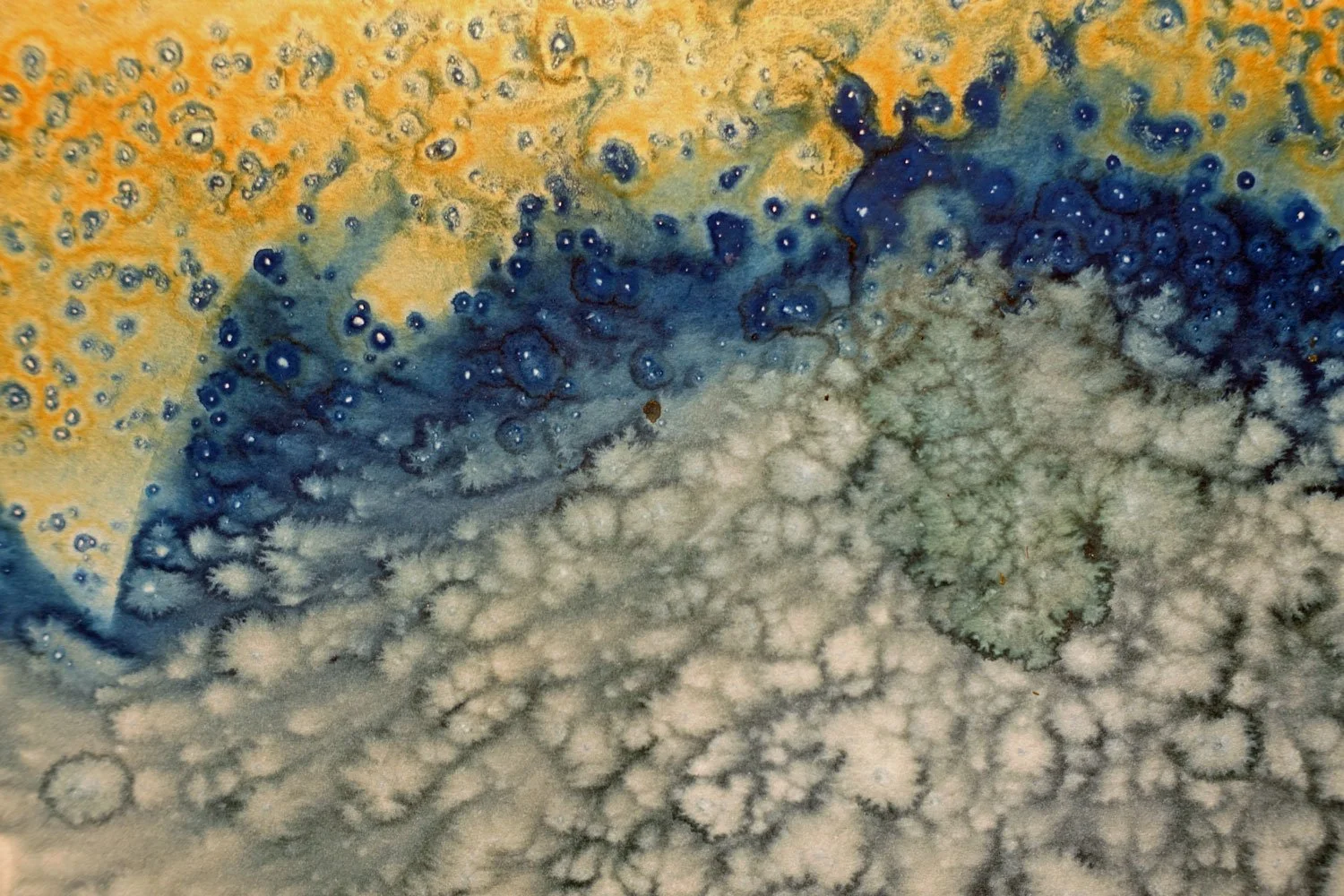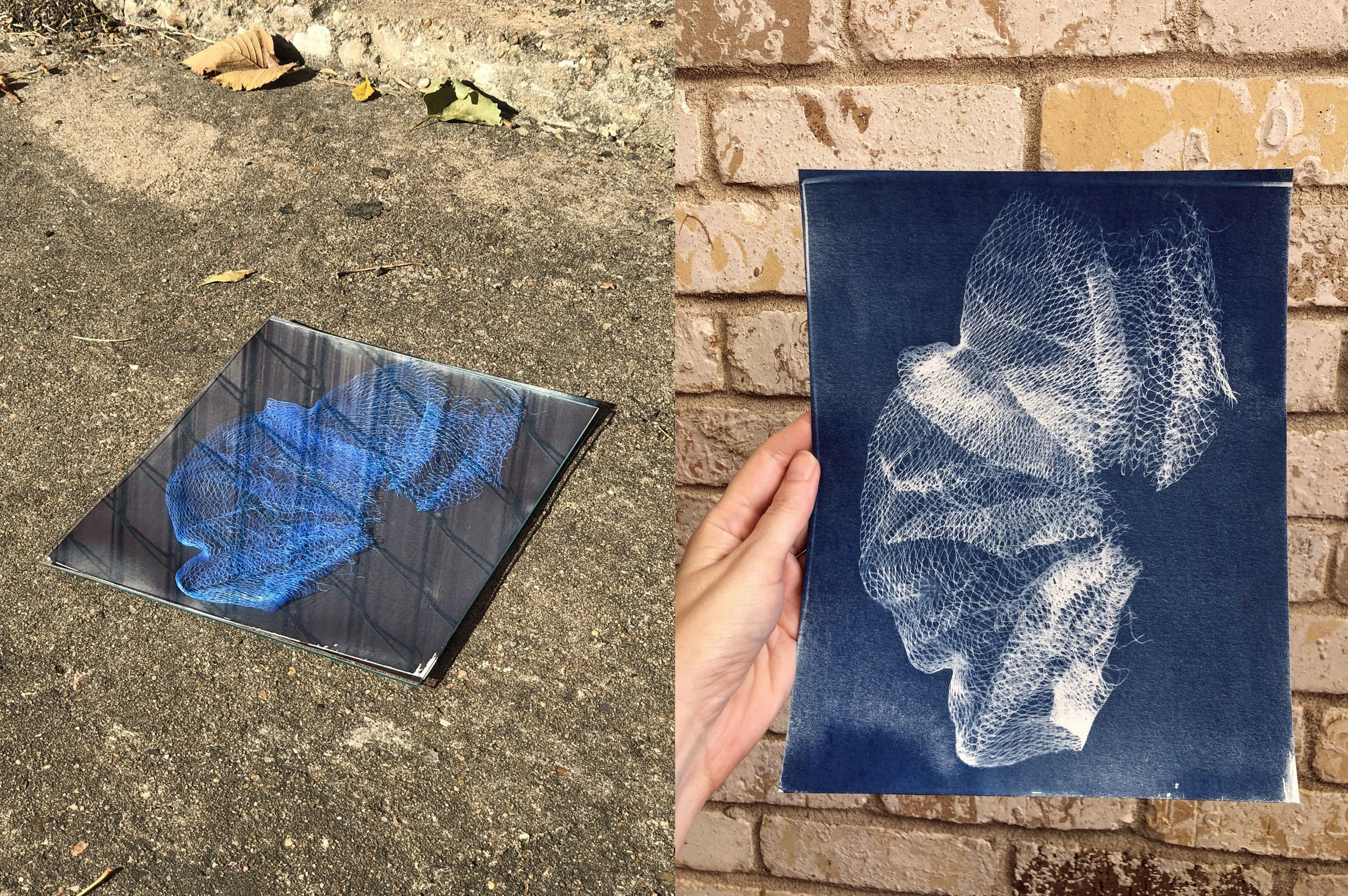What is cyanotype?
Cyanotype is one of the oldest photographic processes. It was developed in 1842 by Sir John Herschel, a British astronomer, chemist, mathematician, and botanist. He was very busy.
Unlike traditional photography, cyanotype is a cameraless technique. It involves placing an object or negative against a sheet of paper coated in a light-sensitive iron salt solution and exposing it to sunlight. UV light reacts with the solution, darkening the exposed areas. Areas that were blocked from the sun by the object or negative are unaffected, remaining white.
The print is fixed in plain water, where it turns Prussian Blue. I prefer to think of this part as magic, but more scientific explanations are available.
I was previously vaguely aware of cyanotype primarily through the work of Anna Atkins. Atkins was an English botanist who used cyanotype to capture images of algae. Her 1843 book Photographs of British Algae was the first book published with photographic images.
In 2016, I ran across this image by Meghann Riepenhoff at Fotofest in Houston.
The wall text indicated it was a cyanotype recording the movement of water on a beach. I found the image beautiful and intriguing, but I was utterly bewildered as to how it was made.
Several years later during the pandemic, that image popped into my head again and I began looking into the cyanotype process and all of the various ways it can be used. I ordered supplies and made my first cyanotype using a piece of an old poufy bath thing.
And that was it, I was hooked. What began as a small pandemic experiment became my new favorite medium.



